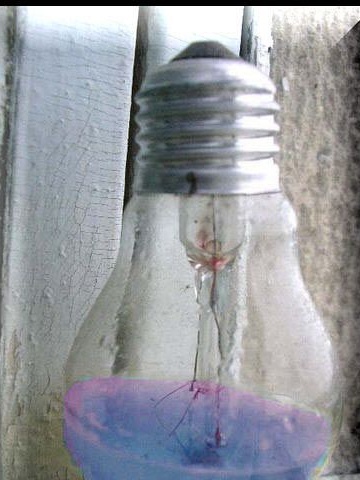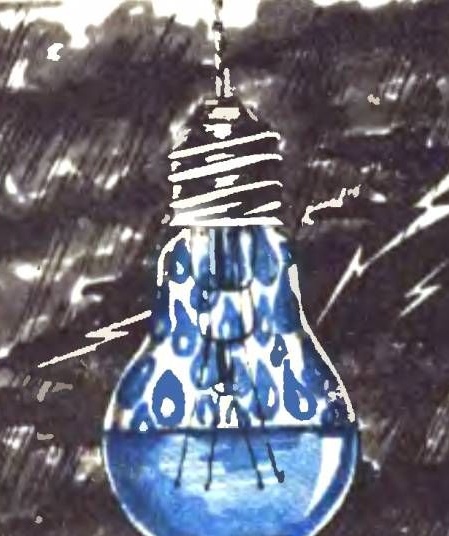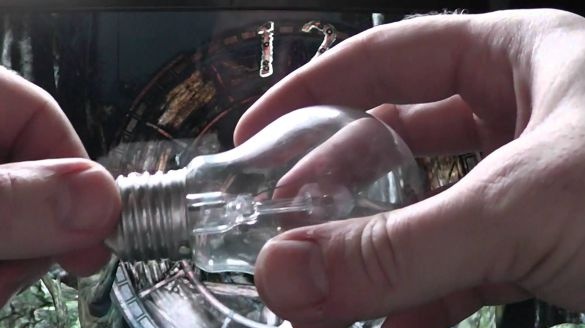What is needed to make a barometer?
- The bulb is blown
- The thinnest drill
- Ink or a piece of lead from a chemical pencil
The process of reincarnation
1. We take the lamp and in the place where it starts the metal base, carefully drill a hole. The diameter of the hole should result in a maximum of 3 mm. It must be drilled very carefully, since the glass can crack right in the hands and you will have to look for a new light bulb.
2. Pour ordinary water into the hole. It should be exactly half the lamp.
3. Now you need to fill the water with a couple of drops of ink or throwing a small piece of lead from a chemical pencil into it. The barometer is ready!

Learning to decode barometer readings
- If the walls of the barometer were covered with small droplets of moisture, then this clearly indicates that tomorrow will be a cloudy day without precipitation.
- If drops of medium size have formed on the walls of the barometer, and vertical dry stripes are visible between them, then tomorrow cloudy weather is expected.
- If there are large drops on the walls, then tomorrow expect a short rain.
- Flowing large drops warn you that tomorrow you need to bring an umbrella or raincoat, as a thunderstorm is planned.
- If large drops formed only near the water surface and the upper part of the barometer is dry, then it will certainly rain, but not at your place, but at a distance.
- If it is raining outside your window and your barometer is dry, then rest assured that tomorrow you will have a great sunny day.
- If droplets of moisture appeared on the side of the barometer that looks north, then wait for tomorrow afternoon rainfall.

Use this barometer, it is possible only in room conditions and at plus temperature. As for cottages, so it’s just a great predictor, because not every garden plot is within the radius of Internet access, and not everyone has a TV in their dachas.

